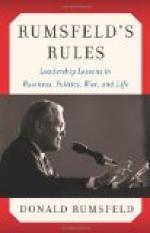There were many tasks before the British general. Southern Natal was being invaded and had to be cleared of the enemy; the Cape Colony, too, had to be freed from its Boer visitors, and the rising of the Cape Dutch stopped. Ladysmith, Kimberley, and Mafeking were all awaiting relief, and last, but not least, the Boer armies had to be beaten, and the two Republics conquered. The strategical problem was how to accomplish all these tasks at once, if possible, and if that could not be done, to sort them in order of importance and deal with them in that order. The essential thing was not to violate any of those great principles which the experience of a hundred wars and the practice of a dozen great generals have proved to be fundamental. The leading principle is that which enjoins concentration of effort in time, space, and object. Do one thing at a time and do it with all your might. If the list of tasks be examined it will be seen that there is a connection between them all, and that the connecting link is the Boer army. Suppose the Boer army to be removed from the scene every one of the other aims would be easy of accomplishment. There would then be no invaders in either colony; Ladysmith, Kimberley, and Mafeking would be safe, and the troops in those places free to march where they pleased; the Cape rising could be suppressed at leisure, and the British general could at his convenience go to Pretoria and set up a fresh government. No other of the tasks had this same quality of dominating the situation; any one of them might be accomplished without great or immediate effect upon those that would remain. For this reason wisdom prescribed as the simplest way of accomplishing the seven or eight tasks the accomplishment of the first or last, the destruction of the Boer army. That army was in three parts: there was a fraction on the western border of the Free State, a fraction south of the Orange River, and the great bulk of the whole force was in northern Natal. Destroy the principal mass, and you could then at your leisure deal with the two smaller pieces. Everything pointed to an attempt to crush the Boer army then in Natal.
There were two ways of getting at that army which was holding Ladysmith in its grip. One was along the railway from Durban, one hundred and eighty-nine miles long; it was sure to bring the British Army face to face with the Boers at the Tugela. That point reached, either the Boers would stand to fight and, therefore, give the opportunity of crushing them, or they would retreat, in which case Ladysmith would be relieved, and the British force, strengthened by White’s division, would be within three hundred miles of Pretoria. A great victory in Natal would save Natal, stop the Cape rising, and, if followed up, draw the Boer forces away from Kimberley and the Cape Colony.




